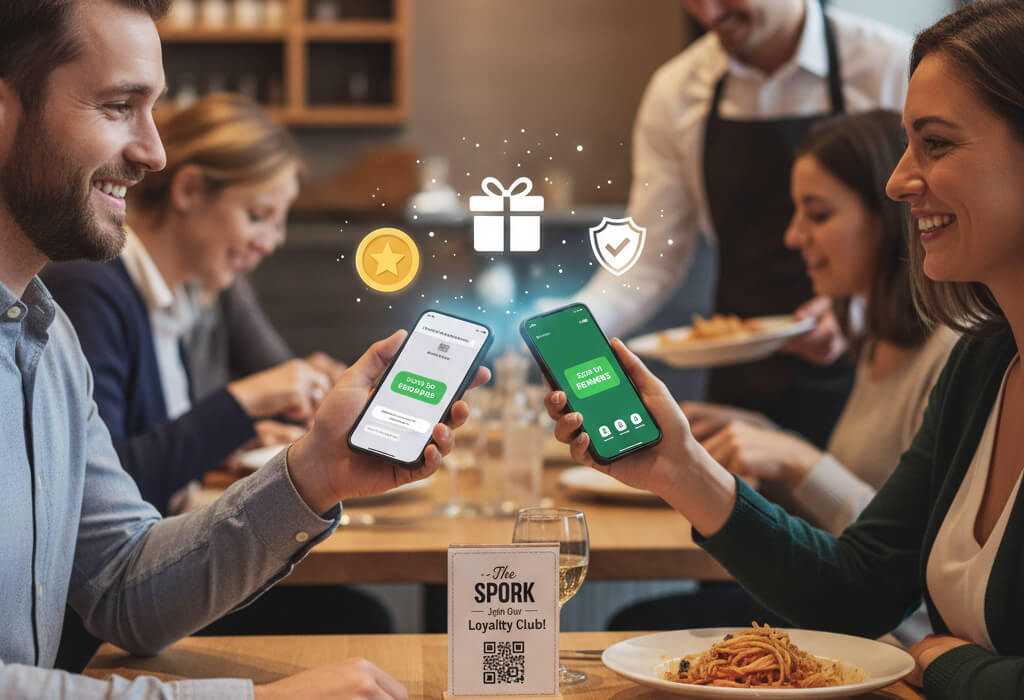Loyalty Programs That Actually Work for Restaurants

In today's highly competitive dining industry, it's not enough to just attract new customers—you need to retain them. Customer retention is key to long-term success, and one of the most effective ways to keep diners returning to your restaurant is by creating a loyalty program. However, not all loyalty programs are equally effective. To be successful, your program must deliver tangible value to your customers while supporting your restaurant’s growth. Here's how to design a loyalty system that will keep guests coming back for more.
Why Loyalty Programs Matter for Restaurants
Loyalty programs can serve as the backbone of your restaurant’s customer retention strategy. When designed correctly, they can:
- Boost Customer Retention: Repeat customers tend to spend more over time than first-time diners. Studies have shown that loyal customers not only return more frequently but also make larger purchases.
- Increase Average Order Value: When diners know they are earning rewards, they often increase their spending to maximize the value they receive. Offering incentives like points per dollar spent encourages diners to spend more.
- Provide Insights into Customer Behavior: Just like tracking online activity helps improve your marketing (see how restaurants measure ROI), loyalty programs allow you to track customer preferences and spending habits, which can lead to more targeted marketing and personalized offers.
- Differentiate Your Brand: With countless dining options available, offering an innovative or rewarding loyalty program can help your restaurant stand out and keep your brand at the forefront of customers' minds.
Types of Loyalty Programs That Work
When designing your restaurant's loyalty program, there are several models to choose from, depending on your goals and the type of dining experience you offer. Here are some of the most effective options:
1. Points-Based Rewards
- This is one of the most common and easy-to-understand loyalty models. Guests earn points for every dollar they spend, which can be redeemed for rewards such as discounts, free items, or exclusive experiences. For example, a diner might earn 1 point per $1 spent and get a free entrée once they accumulate 100 points. This model works especially well when integrated with your online ordering system (learn how to set up an online ordering system without high app fees).
2. Visit-Based Rewards
- In contrast to points-based systems, visit-based loyalty programs reward customers based on the frequency of their visits rather than the amount they spend. For instance, customers could earn a free meal after purchasing 9 coffees at your café. This works well for quick-service restaurants (QSRs) that rely on frequent, casual visits.
3. Tiered Loyalty Systems
- Tiered systems incentivize customers to spend more in order to unlock additional rewards. Think of Silver, Gold, and Platinum levels—loyal customers can unlock perks like priority reservations or free appetizers once they hit certain milestones. This approach is great for encouraging repeat visits and higher spending, and it fits seamlessly with the restaurant marketing funnel (explained here).
4. Subscription-Based Memberships
- Subscription-based loyalty programs are gaining traction, especially in restaurants that offer subscription-style dining. For example, diners might pay a monthly fee of $10 to receive benefits like free delivery or access to exclusive dishes. This model ensures steady, recurring revenue while strengthening customer loyalty.
5. Experience-Based Rewards
- Not all rewards need to be financial. Offering unique experiences like a chef’s table event, a private tasting, or a behind-the-scenes kitchen tour can help foster a deeper emotional connection with customers. This approach can be a great way to differentiate your restaurant and enhance your brand identity (why branding matters).
Best Practices for Restaurant Loyalty Programs
For your loyalty program to succeed, it must be easy to use and clearly valuable to customers. Here are some best practices:
- Make it Easy to Join: Make the sign-up process seamless—whether online through your website, via a dedicated app, or in-person at the table. The program should be as accessible as your menu or reservation system (see why website UX is critical).
- Go Digital: Paper punch cards are a thing of the past. Customers now expect digital solutions. Consider using an app or email-based system that integrates directly with your online ordering platform. This helps streamline the process and keeps the program top of mind.
- Provide Instant Value: One of the quickest ways to engage new loyalty program members is by offering instant rewards—such as a free dessert or drink upon sign-up. This immediately makes customers feel like they’ve received value, boosting their likelihood of coming back.
- Promote Everywhere: Make sure to promote your program on menus, social media, and receipts. Consider linking promotions to direct online reservations (cutting out third-party middlemen) to help you maintain better control over customer interactions.
- Personalize the Experience: Use the data you collect from your loyalty program to tailor offers and rewards to your customers’ preferences. For example, you can send personalized birthday deals or recommend their favorite dishes. This can be especially useful in driving SEO-driven growth (a big part of the restaurant's success).
Final Thoughts
A well-crafted loyalty program is about more than just offering discounts. It's about creating a relationship with your customers that makes them feel valued and connected to your brand. By integrating your loyalty program into your website, providing real value through rewards, and personalizing experiences, you can transform one-time diners into loyal brand advocates.
Just like a strong online presence can future-proof your restaurant (see how here), a well-designed loyalty program ensures your customers don’t just visit once—they return time and time again. If you design your program thoughtfully, you’ll foster customer loyalty, increase revenue, and differentiate your restaurant in an increasingly crowded market.
